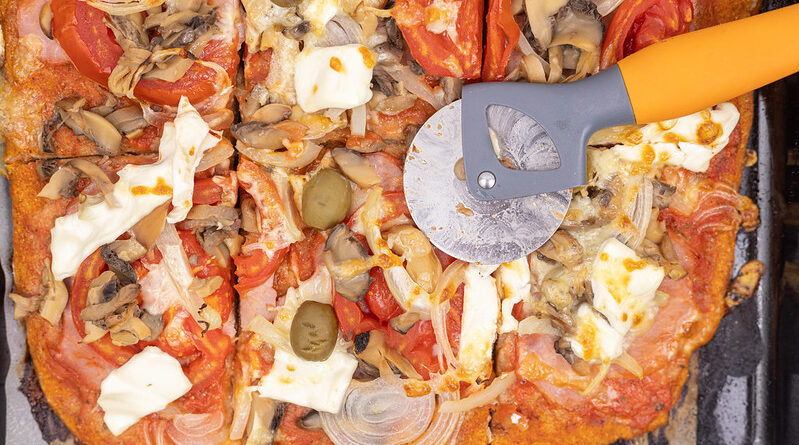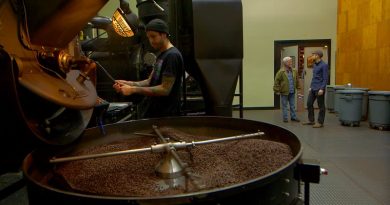The Food of Italy
Rome
Tonnarelli, or Spaghetti Alla Chitara is Rome’s answer to spaghetti. Thicker, squared (cuboid) strands often served in the popular roman dish of Cacio e Pepe, simply cheese and pepper pasta!
Saltimbocca alla Romana is a tenderised fried veal escalops that has been wrapped and lined with prosciutto and sage and marinated in marsala wine. The name saltimbocca literally means ‘jump in the mouth’, as the strong flavours combined make for a bit of a flavour explosion.
A carbonara is also a globally ubiquitous Italian dish of Roman origin. The simple pasta dish is made with hard cheese such as Pecorino Romano or Parmigiano-Reggiano (often both), Pancetta or smoked pork alternatives, liberal amounts of black pepper, and egg.
Carciofi alla Giudia (Jewish-style Artichokes) peeled, boiled, flattened, deep fried, served with a lemon juice and salt garnish.
Baccalà, dried salt cod, features heavily in Roman Jewish Cuisine. This is probably due to the fact that many Roman Jews are Sephardic Jews who came to Italy from Spain and Portugal, where baccalà is highly popular.
Suppli are Roman street food and snack. Small balls of Arborio rice with a tomato and mozzarella filling that have been deep fried, like croquettes.
Southern Italy
Southern Italians are well known for their resourcefulness and their excellent, unfussy cuisine – melding the flavours of the earth with time-honoured traditions and innate culinary wisdom.
Regional specialties range from Calabrian timballo (a decadent dome shaped combination of pasta, tomato sauce, meats, and cheeses), to regional cheeses, to luscious desserts and local pastas – the list is endless. Entire cookbooks could be written on the cuisine of each of southern Italy’s eight regions, respectively.
Food is fresh and seasonal. Vegetables are also preserved, as are meats and seafood (cured, dried, or preserved in oil), and cheeses. Festivals are often held when a new vegetable or fruit springs into season, or in honour of a special cheese, pasta, or cured meat.
Campania includes Naples, most famous for its pizza, as well as Capri and Sorrento, famous for their lemons and limoncello liquor. It also includes a plethora of other towns famous for various items such specialty pastas, anchovies, buffalo milk mozzarella, luscious fruits from the slopes of Mt. Vesuvius, ricotta filled sweet pastries, and more.
The region of Calabria is known for swordfish, which can be prepared in a flavorful pasta dish, grilled, or preserved in oil. Calabrian cuisine is rich and varied. The cuisine features spicy hot peppers, olive oil, pastas, grains, and plenty of vegetables (especially eggplant, tomatoes, and whatever else is in season).
The Puglia region is heavy with olive groves, and thus olive oil plays a major role in the cuisine. Many grape vines also grow in the region, producing wines such as Primitivo and Nero di Troia. Grains also grow here, and are processed into bread and pastas, such as orecchiette (ear-shaped) pasta. The town of Altamura is renowned for its artisan bread. Like much of southern Italy, Puglian cuisine was traditionally largely based on vegetables and other vegetarian crops, though today many specialty meats and cheeses play a major role in the diet, as well as fish, and vegetables.
Southern Italy is a treasure trove for the food connoisseur and anyone searching for authentic, unique, traditional, diverse, excellent cuisine with its soul firmly rooted in the soil, sea, and forests of the region.
Naples
Naples is most famous for its pizza. People travel from far and wide to sample Neapolitan pizza, savored for its quality toppings and its flavorful, thin, slightly chewy crust.
True Neapolitan pizza must have a crust of a designated thinness. It is topped with items such as San Marzano tomatoes from the slopes of Vesuvius, mozzarella from Campania, and extra virgin olive oil. It is cooked very briefly (60-90 seconds) in a very hot wood-burning stone oven.
The most renown Neapolitan pizzas are pizza Marinara (tomato, garlic, oregano, olive oil), and pizza Margherita (tomato, mozzarella, basil, olive oil).
Other specialties of Neapolitan cuisine include pasta dishes such as linguini or spaghetti with clams, tomato sauces, and the sweet pastry called sfogliatelle (filled with ricotta cheese and candied citrus peel). There are many specialties from around the region, such as buffalo milk mozzarella, the prized tomatoes that grow on the slopes of Mount Vesuvius, and seafood from the Bay of Naples.
Sicily
Sicilian food is thought to be the greatest in the Mediterranean. Seafood and fresh vegetables are the staples, with influences as far and wide as Greece, the Romans and exotic spices from the East. Sicilian food is extremely healthy. Tuna, swordfish, anchovies, sardines, and plentiful shellfish are the most-often seen catches prepared simply with strong flavours like olives, capers and sun dried tomatoes. Fresh sardines with pasta is a delicious treat hard to rival.
Sardinia
Busa, a durum wheat pasta is the main staple of Sardinia cuisine. Culurjonis raviola is made from it and filled with delicious ricotta cheese, herbs eggs or other flavourings and also the tarditional Pane Carasau bread, made of flat crackling sheets.
Northern Italy
Florence
Florentine food is typical of the Tuscany region, simple with abundant use of local produce, especially cheese and meats. Many traditional Florentine meals revolve around four fundamental ingredients: bread, olive oil, Florentine steaks of beef or game (boar, deer or rabbit) and wine. Florentine restaurants will serve all Italian specialities, not just those that are traditionally Tuscan.
Crostino – Literally meaning “little toast” in Italian, Crostino is a starter dish which consists of lightly toasted bread with an assortment of toppings. The Florentine crostini di fegato is usually covered in a liver paste (made from veal, chicken, goose or duck) and topped with capers, anchovies, onions and sage for flavour.
Bistecca alla fiorentina – The ideal meal for all meat lovers, Bistecca alla fiorentina is a T-bone cut of beef, traditionally from the local Chianina or Maremmana cattle breeds. The steak is grilled, seasoned with salt and olive oil. The outside must be crisp and appear well-grilled, whilst the inside remains rare. Typically, the steak is garnished with a lemon wedge and can often be shared between two.
Tripe has traditionally been a staple part of the Florentine diet for centuries, stemming from the desire to utilise all the meat from an animal. Tripe is commonly served in two ways in Florence. Firstly, trippa alla fiorentina is tripe sautéed in olive oil, onions and tomatoes, and served with parmesan. Alternatively, lampredotto is another typical way to serve tripe in Florence, consisting of thinly sliced tripe cooked in broth and often served in a sandwich. It is then usually topped with either a spicy, herb or gravy sauce. Lampredotti are usually served as street food and can be bought from street vendors or in public markets.
Schiacciata alla fiorentina is a traditional cake which can be found in almost any Florentine pastry shop. It is a pastry-style sponge cake flavoured with orange zest and sometimes a filling of some kind. It is not overly sweet, and is often enjoyed for breakfast, afternoon tea or dessert. It is served with vanilla and lemon-scented sugar.
Venice
Venetian food represents the perfect fusion of the bounty of the mountainous north of Italy, the seafood of the lagoon and the Adriatic sea, and an ancient history involving the trade of all of the world’s fine foods and spices.
Cicchetti are small side dishes and snacks, similar to Crostino, which are served in Venetian bars and informal restaurant settings. They consist of a variety of small bread topped with various topping combinations of meats, fish and vegetables. These are typically consumed alongside a local beverage such as a wine, Prosecco, or a “Spritz”, which is a cocktail made of Prosecco and locally produced bitter aperitifs such as Aperol.
Sarde in saor are marinated Venetian sardines, marinated overnight with fried onion and dried fruits creating a sort of ‘sweet and sour’ effect. Delizioso!
Bigoli in Salsa is Venice’s signature pasta dish, made with Bigoli pasta (like extra thick whole wheat spaghetti) in a jammy fried onion and salted anchovy or sardine sauce.
Pandoro is a famous Venetian Christmas bread, originating in Verona, a province of the Veneto region, and dating back to the 18th century. Because of the high cost of sugar and spices, and the fact that Venice was a major trading hub for the entire continent, the cakes were mostly consumed by Venetian aristocracy until they became more affordable to the general population.
Tiramisu, perhaps one of the most famous Italian desserts, was invented in the Treviso in the region of Veneto as recently as the 1960’s.
Pilot’s Italian Recipes
Porcini Mushrooms with Beans ‘al Cartoccio’
Chestnut Polenta with Pancetta, Balsamic Vinegar & Ricotta
Braised Rabbit with Caramelized Radicchio & Salsa Verde




